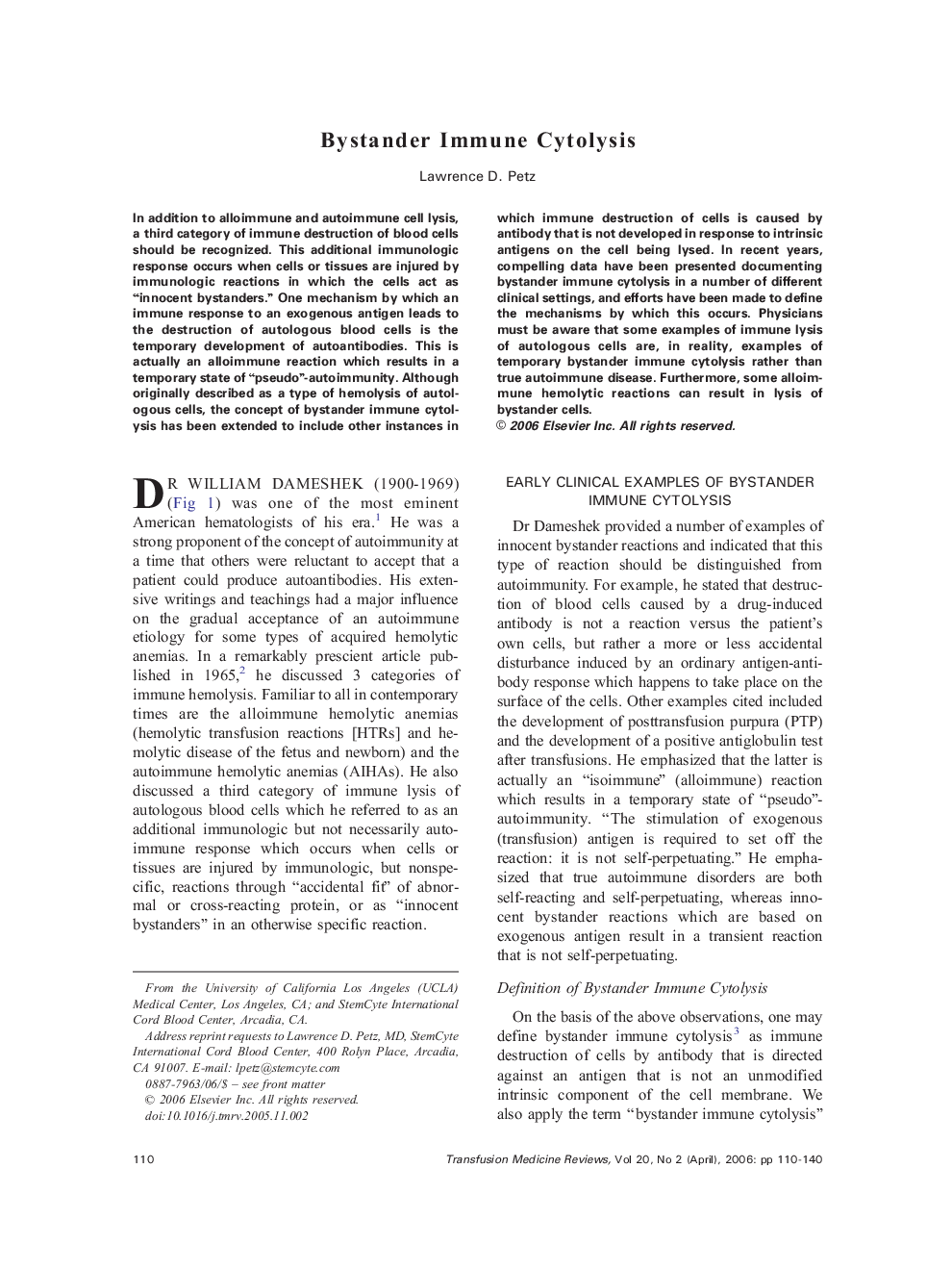| Article ID | Journal | Published Year | Pages | File Type |
|---|---|---|---|---|
| 3337008 | Transfusion Medicine Reviews | 2006 | 31 Pages |
In addition to alloimmune and autoimmune cell lysis, a third category of immune destruction of blood cells should be recognized. This additional immunologic response occurs when cells or tissues are injured by immunologic reactions in which the cells act as “innocent bystanders.” One mechanism by which an immune response to an exogenous antigen leads to the destruction of autologous blood cells is the temporary development of autoantibodies. This is actually an alloimmune reaction which results in a temporary state of “pseudo”-autoimmunity. Although originally described as a type of hemolysis of autologous cells, the concept of bystander immune cytolysis has been extended to include other instances in which immune destruction of cells is caused by antibody that is not developed in response to intrinsic antigens on the cell being lysed. In recent years, compelling data have been presented documenting bystander immune cytolysis in a number of different clinical settings, and efforts have been made to define the mechanisms by which this occurs. Physicians must be aware that some examples of immune lysis of autologous cells are, in reality, examples of temporary bystander immune cytolysis rather than true autoimmune disease. Furthermore, some alloimmune hemolytic reactions can result in lysis of bystander cells.
